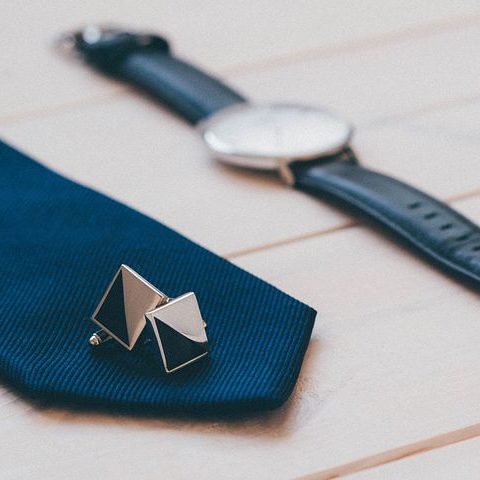Personalisation In the Luxury Space: Q&A with Tateossian
by Hugh Williams on 11th Apr 2018 in News

Personalisation and customer experience have always been paramount in the luxury sector. However, with the shift to e-commerce affecting this space as much as any other, luxury brands are having to find a way to match their offline offerings in an online environment. We caught up with Sumeet Ambre, e-commerce & digital marketing manager, Tateossian, at FUTR 2020 to discuss these changes.
RetailTechNews: How does selling luxury goods online differ to selling other goods online?
Sumeet Ambre: The luxury market has always been a face-to-face deal closing experience. As an industry steeped in heritage and tradition, change doesn’t come naturally to it; but in today’s dynamically changing consumer market, that is precisely what luxury brands must do. It is exciting to see that luxury products are now bought even without seeing them physically.
Today, research suggests over 60% of luxury brand shoppers not only use their mobile devices to look at what to buy, but where to buy it, and how much they are willing to pay. This may drive them to make an offline purchase, eventually, but their initial drive to purchase still begins online, stressing the importance of digital in the luxury retail space. There’s a growing realisation amongst luxury brands that selling online can benefit and reinforce the luxury in-store experience, rather than diminishing it.
Luxury brands are often looked at as an inspiration, as they represent more than the item the customer is purchasing. In the store, the exceptional level of service and the environment supports this, but online, it is the content that drives this sentiment, whether it is the blog on the website, how-to style guides, or the lifestyle shots on social media channels.
The value and DNA of the brand should always be at the forefront of our customers – the customers should know what they are looking at. At Tateossian, innovation is the core value for any product, whether it is limited-edition gear cufflinks or it is jewellery made of stone from the moon. We are innovative, different, and unique – importantly, the only one in the industry to experiment and produce such unique jewellery.
How important is personalisation when selling luxury goods online?
These days we have tons of options available at our fingertips. So, naturally, only the best shopping experiences are going to grab our attention – the ones that make our lives smoother, easier, and with content that is both relevant and tailored to us.
Personalised e-commerce experiences make life easier for customers! For example, take product recommendations that we currently offer to our customers. These recommendations save our customers having to search back through a site to pick up where they left off, if they didn’t make a purchase the first time. Alternatively, we can monitor a user’s search queries and over time we can suggest similar or associated products to them as they browse. This not only personalises and makes relevant what they see on the screen, but it’s also an excellent way to up-sell and cross-sell, provided these recommendations appear at the correct stages and right touchpoints in a customer’s journey.

Sumeet Ambre, E-commerce & Digital Marketing Manager, Tateossian
There is no one-size-fits-all when it comes to e-commerce personalisation. Now, that of course seems oxymoronic, but what I mean is even customisation can be well personalised.
A new user arriving on the site? Then show your new season arrivals or bestsellers.
Returning customers? Maybe occasional cart-abandoners? Keep them logged in when they bounce off your site. Then, when they come back, present the items they last viewed on the landing page.
Apart from the personalised recommendations across the homepage, categories, product page, and shopping cart – we also send personalised recommendations via email. We have created a Tateossian VIP club for our loyal customers. They receive catered offers and early access to our collections.
With both online and offline stores, how do you track the effect of your digital marketing efforts on your bottom line?
Analytics and granular reports measure our digital marketing efforts. However, sometimes it is difficult to track offline marketing or promotions online.
Tateossian advertises in many fashion magazines, including in-flight magazines, and also exhibits at key trade shows. However, sometimes we do struggle when it comes to measuring offline marketing results.
We use cross-channel attribution models, including bringing offline channels and touchpoints into the equation. To be a part of this growing 'bromance' between online and offline channels, one needs to know what online and in-store attribution is all about – and how to use it.
For instance, using landing pages for offline campaigns during Father’s day or Black Friday is a time-tested way of measuring engagement and, ultimately, sales. We use a catchy and straightforward URL in our offline marketing, based on the campaigns. As well as that, we can offer unique coupon codes based on the campaigns that can be redeemed on our website. This campaign could be online or offline, which will be redeemed online only.
How is customer data helping you improve the online customer shopping experience?
Technological developments have made it far easier to cultivate deeper relationships with our customers. Consumers want their expectations to be met, and we want to guide them through the purchase journey – making use of the available data is the only way to achieve this and lay the foundations for a relationship moving forward.
There are an array of KPIs and metrics that are available; and we could track to measure customer experience, however, it can be a bit overwhelming. Hence, we benchmark a few KPIs and ensure that these are the ones that matter.
After every purchase, our customers receive a feedback email focusing on the quality of the service and the products that they have received. It also consists of a Net Promoter Score – a proportion of the customers who will refer us to their friends and family. NPS is a leading indicator of growth; it provides the best anchor for our customer experience management (CEM) program.
Data integration is another practice that we have at Tateossian, especially when we operate in a multichannel environment. We make sure that the in-store experience compares with our online one, or whether certain offers or deals do better online. We have our insights and, based on that, we decide which elements of the customer experience are going to be ‘exclusive’ to each environment.
We also use data to improve our email marketing. Previous purchase history helps us to inform customers when their favourites are back in stock, go on sale, or release a new product line.
Tateossian customers hate the feeling of getting a 'personalised' email that hasn’t gone beyond the editing of 'FNAME'. We segment our customer data based on few relevant attributes, so that we can send customers emails they will find interesting.
We also use live chat logs as a source of customer experience data mining. Search data is another source that we consider to find clues as to what customers are looking for on our site, and whether they find it quickly enough.
We can rapidly change the usability and web experience based on the customer data and feedback we receive. We at Tateossian also believe that small changes do contribute to more substantial changes resulting in uplifting the engagement or the conversion rate.
I believe that it is never too early to integrate data, as one doesn’t have to be tech-savvy to benefit from data! Data is the friend of any ambitious e-commerce business that wants to grow fast and please their customers in the process.This content was originally published in RetailTechNews.
attributionDataE-CommerceIn-storeInvestmentPersonalisationTechnology








Follow ExchangeWire